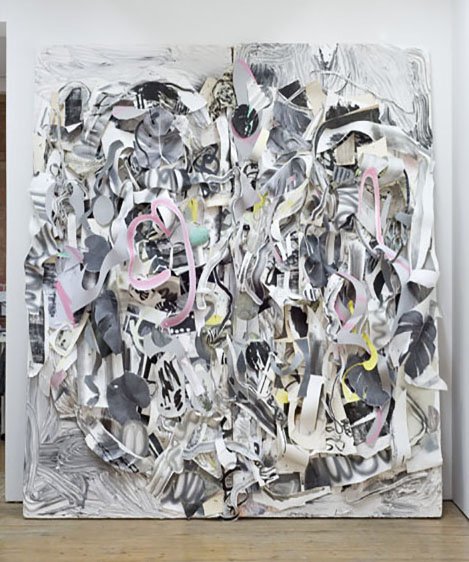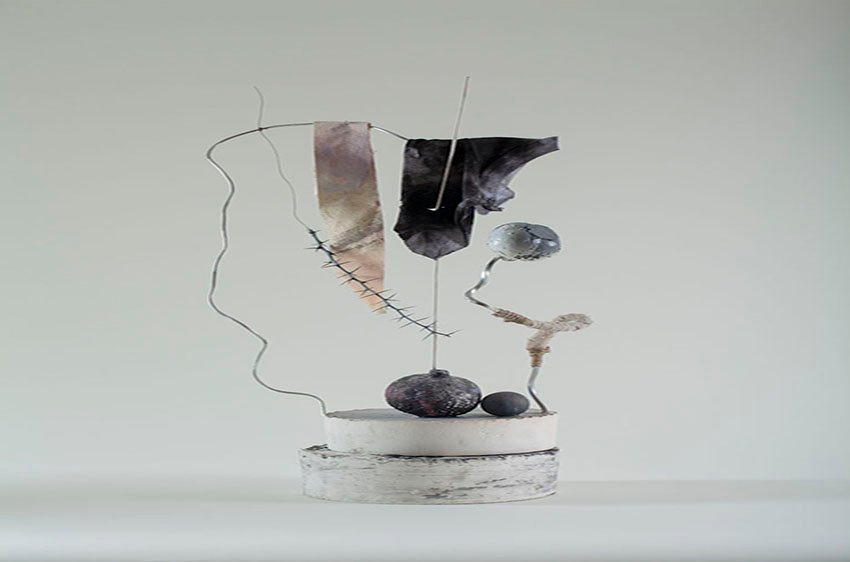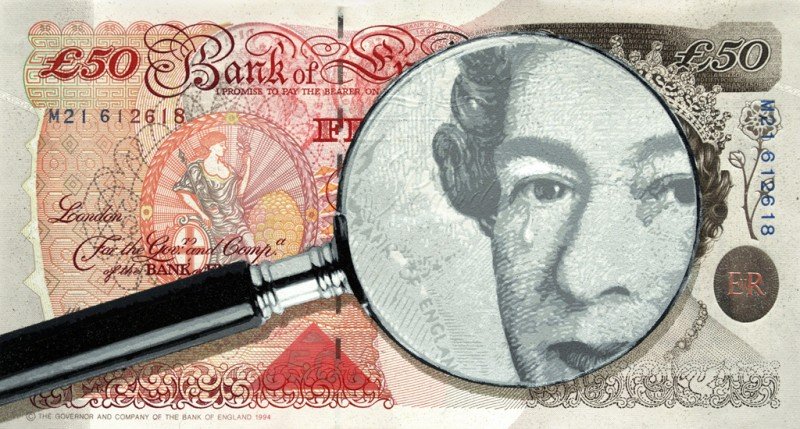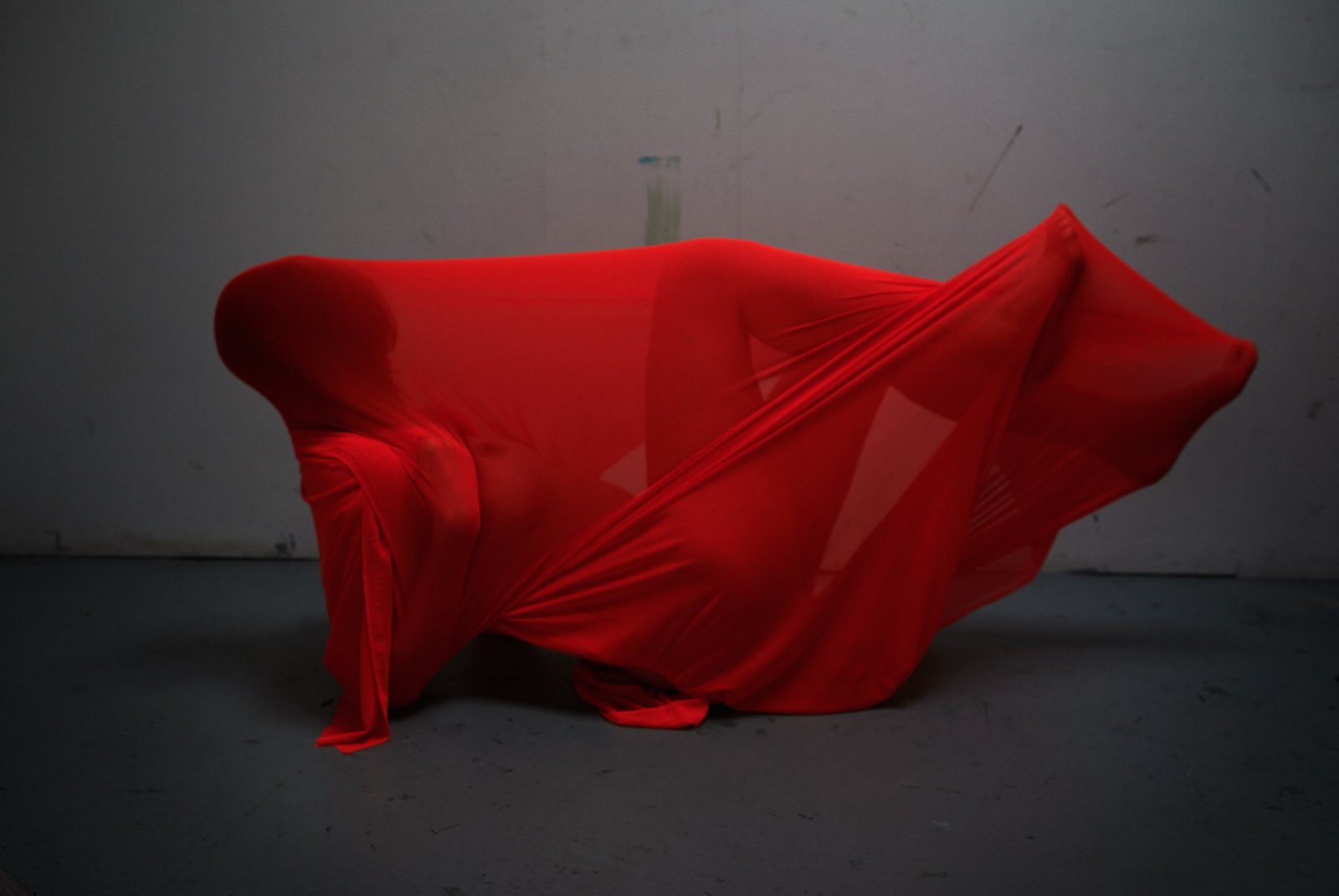England-
Emaho caught up with London native and Royal College of Art graduate, Bruce Ingram, to uncover his fetish for flowers.
Emaho : So, Bruce, what got you interested in art and made you decide that you want to be an artist?
Like most artists, I suppose the creativity started as a kid and was always a priority subject in school. Having an adult perspective to reflect upon my child and teenage years, I can recognize an early interest and enthusiasm for collage and collecting. My bedroom walls and furniture were covered in cut out imagery and I spent much time arranging my beloved stamp albums, which I would love to re order in thematic categories. These activities are still processes that I acknowledge and carry out in my work today.

Emaho : There seems to be a lot of Japanese influence seen in your work, particularly, in your sculpture work. Could you tell us more about what these influences?
I have always been fascinated by an aesthetic found in Japanese and Asian art. My recent sculptures are heavily inspired upon the Japanese art form of flower arrangement ‘Ikebana’. I researched the art form in Japan a few years ago and have always been attracted to the elegant appreciation of form and composition; the styles of flower arrangement are very sculptural, blending elements of the natural and organic with the manmade and synthetic. I am interested in the attention to detail and the weight and energy placed upon attachments and fastening.

Emaho : There seems to be a lot of dissimilar things assembled together in your sculptures and collage. Is there some hidden connection within these elements that you’ve put together or is their randomness intentional?
I am interested in randomness through making and more recently the potential of failure. My work often explores possibilities of process, in terms of finding some kind of outcome in the idea of what a finished work might be. Often processes of making end up visible in the final work. This might be the evidence of the human hand or perhaps a failed work gets reconfigured in to a new work through deconstruction and replacement.

Materials all go through a similar journey of rotation and renewal. I have learnt recently that my best results are always unexpected, the work I start to make always ends up in an outcome that is completely unplanned, I like to go with the flow and trust my instincts when making a new work.

Emaho : Arrangements: why have you laid so much emphasis on the arrangement of things? What is the overarching theme that you wish to illustrate?
The body of sculptures and collages that made my last exhibition, all shared an aspect of placement, the works were physically open ended in the way they might have been placed or fixed, presenting familiar and immediate objects and processes in new and surprising formations. Collages were simply pinned, or nails and paper clips anchored loose paper. The whole show could be physically peeled away, leaving the viewer to mentally unravel and deconstruct the formation of material and objects.

Bruce Ingram – Fall
Emaho : Could you tell us what the arrangement, of the series of 3D collages over photocopies of flowers, meant to portray? What did you want the viewer to see?
The images of Ikebana are lifted from practical guides and how to manuals, the photocopy is a simple extraction of the image and a surface to explore the composition and structures of the exaggerated and stylized forms of flower arrangement. The set of artworks formed a study for the sculptures that followed, by placing painted and cut out brush strokes over the imagery, new images of composition were highlighted, the resulting images are a blend of figuration and abstraction.

Bruce Ingram – Clearing
Emaho : Your use of material, which would otherwise be considered as ‘waste’ seems to garnered wide appreciation. Could you tell us what got you first started on this notion of ‘recycled art’, if one may put it that way?
I am not really interested in the theme of ‘recycled art’ as it implies the intention would be to make a statement about environmental issues with the artwork. I use found objects to include and share universal experiences of the everyday world we live in. I like to use objects in a manner that explore the visual qualities of the object rather than highlighting a practical intention.

Bruce Ingram – Arc
Emaho : Who are the people who have influenced your work and your journey of becoming an artist?
These are some artists and I enjoy revisiting: Robert Rauschenberg, Kurt Schwitter’s, Christopher Wool, Cy Twombly, Franz West, Eva Hesse , Ben Nicolson, Peter Lanyon

Bruce Ingram – Eclipse
Emaho : Lastly, we would love to know what you are currently working on.
In the studio, I am working on some intimate scaled collage works that take their starting point from a size of A2 paper; through layering they are transformed into something three dimensional. I am also exploring casting further in my work, moving on from the fruit to more unrecognizable detritus from the studio, I have started ceramics, which is fun, just making stuff for potential extra stuff to have in the studio, so I am sure they will end up in the next sculptures I make. Also, I have an installation piece which I hope to show soon which will take up lots of space and explore the arrangement of objects and the placing of imagery in a more immersive physical experience.

Bruce Ingram – Upturn
Art & Culture Interviewed by Sandhya Das
Art work by Bruce Ingram

























